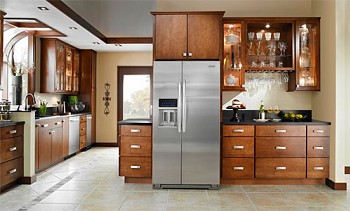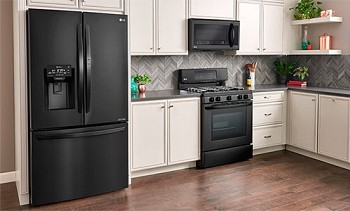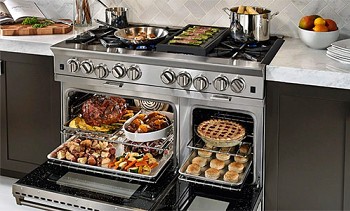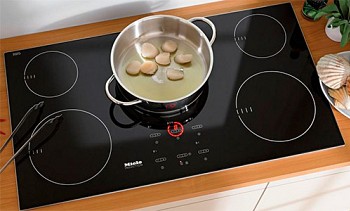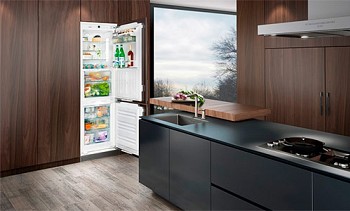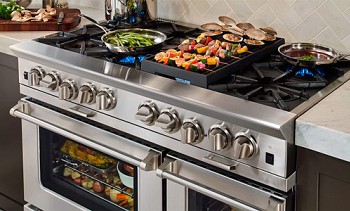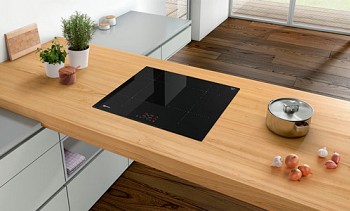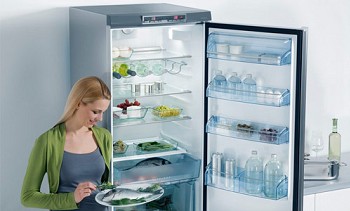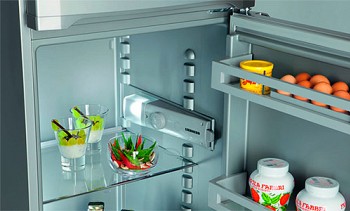It was just 30-40 years ago .. Then people were not tormented by the question "How to choose a refrigerator for home?", They were faced with a task with fewer parameters - "How to get at least some kind of refrigerator!" Today, the buyer was able to choose between thousands of different models. But it is precisely this possibility that becomes a problem for us, and it is this freedom that confuses us. How can one make a choice with such diversity and not make a mistake?
Before you look for something, try to understand - what do you expect from the "general of the kitchen", and what price are you willing to pay for it? And how, besides age, should your new refrigerator differ from the old?
Let's try to ease your task a little, and for this we’ll tell you about the main characteristics and functionality of modern refrigerators. We hope this helps you make a choice. Right choice.
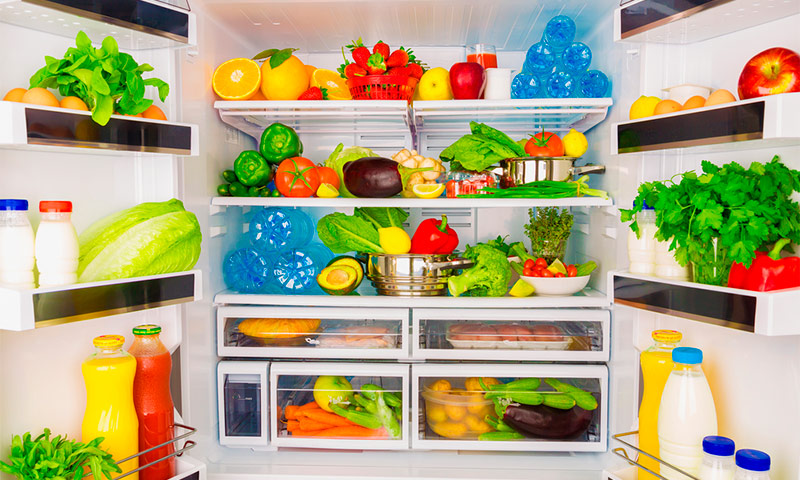
- How to determine the dimensions of the refrigerator
- How to choose the useful volume of the refrigerator
- Number and location of cameras
- Types of refrigerator cooling systems
- Defrosting systems
- Additional functions and characteristics of refrigerators
- Ergonomics of the refrigerator
- Built-in refrigerators
- How to choose the right type of refrigerator
How to determine the dimensions of the refrigerator
The size of the refrigerator is of great importance to you, as its future user, because, firstly, it should fit in the space allotted to it, and secondly, it should contain a stock of food for your family for at least a few days.
The width and depth of a standard refrigerator are the same and are 60 cm. Previously, refrigerators of such dimensions were the only option available.
Today they continue to be the most common, but now the market has a product with other parameters, which means that buyers have the opportunity to choose. For example, the width of narrow models is reduced to 45-50 cm, and for refrigerators with hinged doors and a horizontal proximity of cameras (Side-by-Side), it varies from 80 to 120 cm.
The height of most refrigerators is about 150-160 cm. Of course, there are two-meter "giants" and 50-centimeter "babies" designed for installation under the countertop, but both of them are much smaller than standard ones. That 150-160 cm is the optimal height of the refrigerator, convenient for all family members, so that none of your household would have to tipto for the desired product.

In conclusion, I would like to make a small remark directly related to the issue under consideration. When choosing a refrigerator, especially a large one, one should take into account not only the area of the kitchen, but also the dimensions of the doorways, the length and width of all the aisles, the dimensions of the elevator and its doors. Otherwise, a very unpleasant surprise may await you and your movers.
How to choose the useful volume of the refrigerator
The refrigerator is not just a decoration of the kitchen, which takes up quite a lot of space, but household appliances designed to perform very specific functions. Therefore, we are more interested in not so much its size as its capacity.
The volume of the refrigerator depends on its size: the larger the refrigerator, the more spacious it is. In the technical characteristics of different models, either the general or the useful volume can be indicated - here each manufacturer has its own preferences. The last indicator correlates with real capacity, and when choosing a refrigerator, you should pay attention to it.
The smallest usable volume, as you might guess, with single-chamber refrigerators is from 80 to 200-250 liters. In dual-chamber models, this figure reaches 300-350 liters. The volume of multi-chamber refrigerators and Side-by-Side refrigerators is maximum - 350-700 liters.

What is the most optimal refrigerator volume for you? First of all, it depends on the number of people living in your house. A family of two or three people, if necessary, can do with a single-chamber refrigerator, although an ideal option is still a two-chamber refrigerator. For large families, as well as for people who often receive guests in their house, they need, of course, a larger model.
Do not forget that the volume of the refrigerator is the sum of the volumes of the refrigerator compartment and the freezer. Estimating the capacity of this or that compartment you need, focus on the food traditions that have developed in your family. For example, if the diet of your household is dominated by fresh vegetables and fruits, pay attention to models with a spacious freshness zone. If you practice “clogging” the refrigerator with a 2-3-month supply of frozen food from the supermarket, look for a model with a large freezer.
Number and location of cameras
The number of chambers in domestic refrigerators can vary from one to six or more. In some models, each of them is hidden behind a separate door, therefore, to find out how many camera units are standing in front of you, it is not necessary to look inside.
In single-chamber models there is no separate freezer - its role is played by the low-temperature compartment located inside the refrigerator (in some refrigerators, the so-called refrigerated cabinets, even such an imitation of the freezer compartment is missing). The main advantages of single-chamber units are their small size and relatively low cost, so they can often be found in country houses, student dormitories, in hostels, motels and other cheap mini-hotels.

The most popular, and therefore the most common today are two-chamber models with separate refrigeration and freezer compartments. Such refrigerators are convenient in that they take up relatively little space, but at the same time a large number of products can be loaded into them.
The freezer can be located both above and below the refrigerator compartment. In low refrigerators with a small freezer capacity, the latter is usually located on top.

A two-compartment refrigerator with an overhead freezer.
If you decide to purchase a high refrigerator with a large freezer, then the compartment that you will use more often (usually the refrigerator) should be located on top. Your comfort during operation depends on the relative positions of the refrigerator chambers. Optimally, if none of the family members have to tiptoe, bend over or crouch to get to the shelf or section with the most “popular” foods.

Two-compartment refrigerator with a lower freezer.
Two-compartment refrigerators, in which one chamber is the refrigerator compartment, and the second is the freezer, are the most traditional option, but not the only one.In recent years, it has become increasingly common to find two-chamber units with a different variation of chambers, for example, with a refrigerator compartment and a “freshness” chamber, but without a freezer.

Fridge with freshness area and fridge compartment.
In multi-chamber refrigerators, in addition to the standard refrigerator and freezer compartments, there are various additional chambers. There can be many options: a wine cabinet, a deep-freeze chamber, a moist freshness zone for storing fruits and vegetables, and a separate chamber for perishable foods. However, it should be remembered that the number of cameras directly affects the cost of the refrigerator.

Multi-chamber refrigerator with various types of cameras.
Side-by-side refrigerators deserve special mention. Often they are called refrigerator cabinets, because in appearance they really look like cabinets with double-wing swing doors. In fact, they are two-chamber (less often more), but the freezer, as a rule, is not located above or below the refrigerator compartment, but next to it. The dimensions of such refrigerators are significantly larger than standard, so this option is suitable only for owners of very spacious kitchens.

Side-by-Side refrigerator, on the left is the freezer, and on the right is the refrigerator compartment.
refrigerators compartment
The refrigerator compartment - the most capacious compartment of any refrigerator - is designed to store food that does not need to be frozen. The temperature in the refrigerator can vary from 0 ° C to + 10 ° C.
A separate “freshness zone” may be located in the refrigerator compartment. Often it is also called the "zero zone", because it maintains a temperature close to 0 C. In multi-chamber models, there is sometimes a separate “zero” chamber - such a refrigerator should be purchased if fresh vegetables and fruits, as well as fresh meat and seafood predominate in your diet. At temperatures from 0 ° C to + 3 ° C and humidity of about 90% (“wet freshness”) fruits, vegetables and herbs retain their freshness 3 times longer than at higher temperatures in the refrigerator compartment. In conditions of “dry freshness” (temperature from -3 ° C to 0 ° C and humidity of about 50%), fresh fish and fresh meat can be stored for up to 7 days, while they do not lose their nutritional and taste qualities.
Freezer
The purpose of the freezer is long-term storage of perishable products in frozen form. The temperature here is significantly lower than in the neighboring refrigerator compartment. In accordance with the generally accepted standard, all freezers are divided into 4 types. Each of them has its own marking, which serves as an indication of the minimum temperature that this freezer is able to maintain.
The shelf life of products directly depends on the degree of freezing:
One snowflake (*): the minimum temperature maintained is -6 ° C, the shelf life of the products is 7 days.

Two snowflakes (**): minimum temperature -12 ° C, this temperature ensures the safety of products for 30 days.

Three snowflakes (***): minimum temperature -18 ° C, shelf life of products extended to three months.

Four snowflakes (****): the minimum maintained temperature is -24 ° C, you can not worry about the safety of food products for six months to a year, the food and taste qualities of the products are preserved as well as possible.

Another characteristic of freezers is the power of freezing. This parameter is measured in kilograms and, depending on the model, can vary from 3-4 to 10-12 kg. In fact, the power of freezing is the number of products that this freezer is able to freeze qualitatively in a day. This parameter should be paid attention to those who prefer to buy products for future use, i.e. for several weeks or months at once.
Types of refrigerator cooling systems
To remove heat from the body, it is necessary to perform certain work. How is this process carried out in practice?
There are several types of refrigeration cooling systems:
- compressor (the vast majority of such refrigerators);
- uncompressed - can be absorption or thermoelectric.
Since without a cooling system a refrigerator is just an ordinary metal box with shelves, it would not be out of place to get at least a general idea of the principles of operation of refrigeration equipment of all these varieties.
Compressor cooling system
The vast majority of household refrigerators on the market today have compressor cooling. The heart of a device with such a cooling system is a compressor, the purpose of which is to compress the refrigerant vapor and pump the condensate formed during this along the circuit of the heat exchange system. Condensed refrigerant, evaporating, absorbs heat, on which the principle of operation of compressor refrigerators is based.

Ibutane (R600) and tetrafluoroethane (R134) are most often used as refrigerant in modern refrigerators. The thermophysical properties of the former are better, therefore it is used in most models with energy efficiency classes A + and A ++. Previously, refrigerators other than R134 used other freons, however, due to their ozone-depleting ability, the production of such equipment was discontinued.
One compressor is enough for cooling and the refrigeration compartment, and the freezer. However, refrigerators with two compressors are on sale today (and even with three, but this is already a more exotic option). In this case, each chamber is “fed” from its “feeder”.
Both one- and two-compressor refrigerators have their own advantages. The freezer and refrigerator in two-compressor devices are completely autonomous: each has its own, independent, temperature regime. This makes it possible to precisely control the temperature in each compartment. If necessary, one of the cameras can be completely turned off (for example, for scheduled defrosting), and this will not affect the operation of the second.

From all this the main advantage of two-compressor refrigerators follows - profitability. Firstly, when the electronics detects that the temperature in one of the compartments has risen above the norm, it gives the command to turn on only one compressor, while the second one is inactive at that time, without wasting energy, unnecessarily, to cool the chamber that does not need it. Secondly, when you go on a business trip, vacation or to the country, you can turn off the refrigerator, leaving the freezer on, and this will save you a lot of energy.
If two-compressor refrigerators are so wonderful, why are single-compressor refrigerators so much in demand? The answer is predictable - because of their low cost. After all, it is the price for many buyers that is the determining factor when choosing household appliances. It is the compressor that makes the main contribution to the cost of the refrigerator, and one compressor, even a powerful one, costs less than two weaker ones. As a result, a two-compressor refrigerator is on average 20-30% more expensive.
Relatively recently, single-compressor double-circuit refrigerators with an electromagnetic valve regulating the circulation of refrigerant appeared on the market. At the command of the control unit (or person), the valve blocks the flow of refrigerant into the evaporator of a chamber. Such refrigerators have almost all the advantages of their two-compressor counterparts, but at the same time remain much more affordable.
More and more modern refrigerators are equipped with inverter compressors. Unlike a conventional compressor, which operates discretely, from time to time it turns on at full power, then turns off again, the inverter runs constantly, but with different intensities.
Thanks to a special current converter, it changes its power depending on operating conditions. In response to opening the refrigerator door, loading warm products into it, raising the temperature in the room, the inverter compressor starts to work in an enhanced mode, and when the set temperature inside the chamber is reached, it again smoothly reduces its power. Inverter compressors consume less electricity and fail less often, only refrigerators equipped with them are slightly more expensive than conventional ones.
The difference between inverter and non-inverter compressors is clearly shown in the video:
Absorption cooling system
The principle of operation of absorption-type refrigerators, as the name implies, is based on a physicochemical process called absorption. The refrigerant, in the role of which ammonia usually acts, is absorbed (absorbed) by water in the absorber, or rather with an aqueous ammonia solution. The resulting concentrated solution of the heat pump is distilled into the heater. There, it first evaporates the refrigerant, which has a significantly lower boiling point.
As a result, highly concentrated refrigerant vapors exit the heater and enter the condenser. Condensed ammonia vapor (liquid refrigerant) is sent to the evaporator, where it boils and evaporates, taking heat from the cooling circuit of the refrigerator. Refrigerant vapor re-enters the absorber and the cycle repeats. Under the influence of a constant power source, which can be not only electric, but also gas or combined, the circulation of the refrigerant and its absorbing solution occurs continuously.
The absorption cooling system is used only in small-sized refrigerators. With the same useful volume, absorption units consume more electricity than compressor units. But these shortcomings will become insignificant for you when you learn that absorption-type refrigerators are capable of working on alternative energy sources from the point of view of household appliances - liquid and gaseous fuels. There are also combined models that “absorb” electricity and liquefied gas equally easily.
Thermoelectric cooling system
Another non-compressor cooling system used in refrigeration units is thermoelectric. The basis of the thermoelectric refrigerator is the so-called Peltier effect. It consists in the following: when a direct current passes through a thermal battery consisting of two dissimilar conductors, heat transfer occurs at the place of their contact - one part of the battery is heated, the other is cooled. When the current direction changes, the reverse process will be observed. If the cooling element is isolated from the environment, we get a refrigerator that can be successfully used in everyday life.
The thermoelectric cooling method is usually used in mini-refrigerators, primarily we are talking about car refrigerators and bag coolers. The main advantage of thermoelectric units is their noiselessness. If the compressors are not strong, but still buzzing, the absorbers gurgle periodically, then the thermoelectric battery does not make a sound during operation.
In addition, they are reliable and durable: there are no moving parts and complex connecting tubes in them, which means there is nothing to break. Even liquid or gaseous coolers that could leak through a leaky circuit are absent in such refrigerators. The thermoelectric refrigerator is not afraid of shaking and vibration and can be operated both in its normal position and in an inverted position. However, despite all its advantages, this type of refrigerator is not very popular.
Defrosting systems
Most readers, for sure, still remember the old refrigerators, which very quickly grew into a real fur coat of frost and ice.To get rid of the ice, it was necessary to defrost the refrigerator 1-2 times a month, and this procedure was long and tiring.
Among modern refrigerators, there are also models with a manual defrost system. Although thanks to the improved design (primarily, the improved thermal insulation of the door) they cause less trouble to their owners than refrigerators of previous generations, such a defrosting system is gradually becoming a thing of the past. The units that shamelessly exploit human labor are being replaced by new technology that can defrost itself.
In most refrigerators available on the market today, one of two automatic defrosting systems is implemented - drip or.
Drip Defrosting System
On the evaporator of the refrigerator with a drip system, frost also freezes, but this structural element is hidden from the user's eyes, so we don’t even know about it.
On the back wall of the refrigerator compartment, as colder, water vapor condenses (a refrigerator with a weeping wall), and this moisture can turn into ice.

However, the compressor is switched off at certain intervals, which allows the ice and frost to melt, and the resulting water droplets to drain down the chamber wall into a special pan.

The latter is usually located directly on the compressor, and under the influence of its heat, the accumulated water evaporates quickly enough. The user's task is extremely simple - periodically ensure that the drainage hole through which melt water flows into the sump does not clog.
No Frost Defrost System
If the refrigerators use No Frost technology, then the frost frozen on the evaporator is melted periodically by the heater turning on. And so that the water does not freeze on the inner walls of the refrigerator, in such models there is also a fan that drives the flow of cold air, thereby equalizing the temperature inside the chamber and drying it.

Refrigerator evaporator with No Frost system.
In addition, there are options for refrigerators in which a drip defrosting system is used in the refrigerator, and No Frost in the freezer. The use of a drip defrosting system in the refrigerator provides less impact on shrinkage of products.
In units with the Full No Frost system, frost does not form either in the freezer or in the refrigerator compartment - each chamber has its own fan for supplying chilled air. The No Frost system greatly simplifies the life of the user, however, this technique also has certain drawbacks - reduction in usable volume with the refrigerator dimensions unchanged, additional noise from the fan, quick drying (weathering, withering) of fresh products due to the presence of cold dry air flows, increased consumption electricity, high price.
It should be noted that although refrigerators with No Frost or with a drip system do not require manual defrosting, once a year this procedure needs to be done for preventive purposes.
Additional functions and characteristics of refrigerators
Refrigerator Economy Class
Like any other household appliances, in accordance with the amount of energy consumed, all refrigerators are assigned energy efficiency classes marked with Latin letters from A to G. However, you will no longer find refrigerators corresponding to the last four classes on the market, but super-economical models marked A +, A ++, and A +++ icons. True, the latter are not cheap, and at the current price of electricity in Russia, they will justify their increased energy efficiency very soon.
Many factors affect the efficiency of the refrigerator, including the useful volume of the refrigerator, the features of the cooling system used, the quality of thermal insulation, the availability of additional functions that enhance the usability of the refrigerator (a refrigerator with extra comfort consumes more electricity than a simple refrigerator of the same volume). Actual energy consumption also depends on operating conditions - ambient temperature, refrigerator load of products, frequency of door openings, etc.
Noise level
A good refrigerator is a silent refrigerator. Especially often the owners of studio apartments tend to this idea, where the kitchen and living area are connected into a single space. The noise level of most modern refrigerators does not exceed 40 dB. Such noise is almost inaudible, or at least it does not cause discomfort. If the characteristics of the fridge that attracted you indicated a higher indicator, it is better to look for another model.
Climate class
To cool the products to a low temperature and maintain it for a long time, when the “overboard” column of the thermometer rolls over + 40 ° C, is a difficult task. And not every refrigerator is capable of it. That is why they introduced such a characteristic as the climate class.
The climate class determines the maximum ambient temperature at which the refrigerator is still able to qualitatively perform its main function - to preserve food. There are several climatic classes - N, SN, ST and T. Refrigerators of class N (normal) work stably at ambient temperatures from + 16 ° C to + 32 ° C. Class SN (subnormal) is designed for a temperature range from + 10 ° С to + 32 ° С, ST-class (subtropic) - from + 18 ° С to + 38 ° С. And finally, models of the T (tropic) class are able to fully function even at temperatures from + 18 ° С to + 43 ° С. For the Russian climate, models of the N and SN class are excellent.




The main task of the refrigerator is the quality preservation of food. But a modern household appliance can offer the user a wide variety of additional features. The available functionality is amazing: car defrosting, humidity control, antibacterial coating, ice maker and chilled drinking water preparation system ... How do you understand which functions you really need and which will turn out to be a waste of money for you?
Air distribution system
Many models of modern refrigerators have a forced air distribution system. This system is intended for pumping air through an evaporator, which, to prevent the formation of frost inside the refrigerator, is taken outside the chamber (No Frost system). In addition, the uniform distribution of air throughout the volume of the refrigerator or freezer equalizes the temperature at all levels, which positively affects the quality of food storage. Forced circulation is especially important in models with glass shelves, where the natural movement of air is somewhat difficult, due to which the temperature in different corners of the refrigerator may vary slightly.
Some manufacturers have implemented in their refrigerators multi-threaded (multi-level) air supply (Multi Air Flow). Cooled air is supplied through special channels to each shelf of the refrigerator. Air circulation between the shelves significantly increases the efficiency of the cooling process: the temperature inside the chamber quickly drops to a predetermined level and keeps more stable.

However, it should be remembered that in refrigerators with forced air circulation, all products stored in open form quickly weathered. You can solve this problem using food storage containers.
Humidity control
For the storage of each type of product, its own conditions will be optimal, not only temperature but also humidity. For example, high humidity is a favorable condition for storing fresh vegetables and fruits, as this slows down their wilting and drying. To store chilled meat and seafood, on the contrary, low humidity is required.
In some models of refrigerators, it is possible to adjust the humidity level in the freshness zone (zero zone). The ideal option is to have two freshness zones with different temperature and humidity settings: one for vegetables, fruits, berries and herbs, the other for meat and fish.
Superfreeze (quick freeze)
Have you decided to visit a store or a market on a weekend and make stocks of meat and fish for a couple of months? What will happen if you send all these relatively warm products to the freezer at a time? That's right, they will be cooled for a very long time and at the same time they will still have time to warm those products that were already in the chamber. As a result, the products will be covered with an ice crust, and when thawing, there will be an excess of liquid in it.
It is for such cases that a quick freeze function is provided. In this mode, the freezer operates at maximum intensity, and the temperature quickly drops below -24 C, and in some models even below -30 C.
It is better to activate this mode in advance - a couple of hours before restocking in the freezer. A return to the normal operating mode of the refrigerator will occur automatically only if your unit has an automatic shutdown for quick freezing. Owners of low-cost models will have to turn off superfreeze manually.
The Supercooling mode, designed for the refrigeration compartment, works in the same way.
Vacation Mode (Vacation)
Those who often leave the house for a long time, going, for example, on a business trip, should like the refrigerators in which there is a "Vacation" mode. This mode, which saves energy, should be activated when the owner does not need to actively use the refrigerator. The freezer will work as usual, but the temperature in the refrigerator compartment will be maintained at about 15 ° C, which is enough to minimize the likelihood of mold and unpleasant odors, but not enough to store food. Of course, all products with short shelf life must be removed from the refrigerator compartment.
Automatic ice maker
The easiest, fastest and most elegant way to cool tea, juice, cocktail or whiskey is to add an ice cube. The ability to produce ice provides any refrigerator. Complete with budget models is a simple mold that needs to be manually filled with water, and then manually removed from it the finished ice. In some modern mid-range and high-price refrigerators, there are built-in ice makers.
What is an ice maker and how does it work? The refrigerator takes water from the water supply (installation of water connection is required) or a special container (the latter will have to be replenished periodically). The liquid that has passed the filtration stage is automatically poured into cells of a special form, where it is frozen. After some time, when the ice is ready, special blades will be pushed out of the mold and they will go to the storage compartment.

When you press the button on the front of the refrigerator, one of the ice cubes in the compartment will go into your glass. Some models of refrigerators with ice makers are equipped with built-in mini-mills that crush ice into crumbs.

The dispenser for food ice is often combined with a source of chilled water. If your refrigerator has such a function, you can at any time quench your thirst with a refreshing sip of cool water.
Antibacterial wall coating
The increased humidity and the abundance of organic material inside the refrigerator are favorable conditions for the reproduction of various microorganisms and, as a consequence, for the appearance of mold and fungus. Avoid this will help the antibacterial coating of the walls of the camera, implemented in some models. A special polymer film with the inclusion of silver ions is called upon to create an ideal biological microclimate in the refrigerator.
How effective is it? For those who consider antibacterial coverage a panacea for all ills, we make a few comments. Firstly, such coverage does not last forever. Secondly, it can destroy only the most sensitive strains of bacteria.Thirdly, the antibacterial coating of the walls of the refrigerator does not protect against microorganisms on the products themselves.
Air filter
Even a good housewife may one day not follow up, and something will go bad in the refrigerator. Those with whom this incident once happened already know how difficult it is to get rid of the unpleasant smell in the cell. The same problem arises when the refrigerator does not have a spoiled product, but just a strong smell.
An air filter filled with activated carbon, which is known to have an adsorbing ability, helps to combat a variety of odors inside the refrigerator compartment. It is thanks to the sorbent that the air of the refrigerator compartment driven through the filter is purified. Of course, the filter requires periodic replacement.

Special odor absorbers for refrigerators available on the market today can solve the same problem. But they, unlike the built-in air filters, are not part of the design of household appliances, and therefore we will not talk about them here.
Cold batteries
Included with some models of refrigerators are the so-called cold batteries. They are small briquettes filled with a special liquid with increased heat capacity. The cold accumulators stabilize the temperature in the freezer, help to cool the food placed there faster, allow you to maintain a low temperature in the refrigerator longer during a power outage or a breakdown in the cooling system.

Ergonomics of the refrigerator
To make you satisfied with your purchase, the refrigerator must not only cope well with its main function, i.e. with the accumulation of cold, but also be convenient to use. What is this expressed in? You should not have difficulty placing a wide variety of items in size and shape - from large pots with soup to small and shapeless doypacks with mayonnaise and ketchup, from tall wine bottles to fragile eggs. You should be able to not only place all perishable products inside the refrigerator, but also easily find what you need later, which means you need a good overview of the contents of the camera.
Shelves
The space of the refrigerator compartment is delimited by shelves, the number of which varies depending on the volume of the refrigerator (in an average-sized unit, they are usually from 3 to 5). If desired, the shelves can be rearranged in height or, if necessary, completely removed from the refrigerator.
Refrigerator shelves can be made either from metal gratings or from high-strength glass. Both the one and the other option have their pros and cons. Lattice shelves, installed, as a rule, in budget models of refrigerators, do not interfere with the circulation of chilled air, which means that they contribute to a more uniform cooling of products. But on the other hand, any accidentally spilled liquid will instantly be at all lower levels - the trellised shelf will not protect from such a nuisance.

Glass shelves look prettier than lattice and provide an excellent overview of the contents of the refrigerator, and the products placed "floor" below, from spilled milk or juice can easily be saved. However, if there is no distribution fan or multi-threaded cooling system in the refrigerator, the circulation of cold air inside the unit with glass shelves will be somewhat difficult.

In some modern refrigerators, two-part folding shelves have appeared. The front half of such a shelf, if necessary, can be moved back, and then on the next level, something overall will easily fit, for example, a large pan.

The shelf with special cells for horizontal storage of bottles with drinks will also help to maximize the effective use of the useful volume of the chamber.

Shelves on the door
There are also shelves on the refrigerator door, the purpose of which is to store small products and small packages. Mistresses here usually place drugs that are sensitive to high temperatures, as well as yogurts, sauces, eggs. Speaking of eggs ... Be sure to pay attention to the stand for them: many manufacturers equip their refrigerators with a 6-egg holder in accordance with European standards, which is not very convenient for Russian consumers who buy eggs in stores in packages of 10 pieces.

Containers
Large pull-out containers located at the bottom of the refrigerator are designed to store fruits and vegetables. Such containers are made, as a rule, of plastic. Well, if it is transparent - this allows you to see the contents.

A reusable partition can be a useful addition, allowing you to divide the container space into two parts in an arbitrary proportion, which is convenient for separate storage of different products. Sometimes one of the containers is replaced by a basket, the lattice walls of which provide free air circulation, which favorably affects the storage of fresh vegetables and fruits.
Boxes in the freezer
If the freezer is small, then it is located in the upper part of the refrigerator and is a stationary box with a trellised shelf inside. Behind the door of a large freezer with a lower location are retractable containers of different volumes and stationary compartments with individual plastic doors.
This allows you to store different products separately, which means you do not have to dump in one pile, for example, fish and ice cream. A valuable addition can be a tray for berries, which allows you to gently freeze foods that, in other conditions, may stick together.

The number of compartments and drawers depends primarily on the size of the freezer.
Lighting
Want to quickly and easily find the product you need on the shelves of a new refrigerator? Then, examining a particular model in the store, pay attention to how high-quality its interior lighting is.
Incandescent lamps inside household appliances are almost replaced by halogen and LED backlighting, the service life of which is almost unlimited. So, you only need to worry about the correct location of the lamp. Most often, the lamp is located under the "ceiling" of the refrigerator, however, in this case, the lower shelves are practically devoid of light. A more optimal option from our point of view is vertical luminaires located in the rear of the side walls. Good coverage of all corners of the refrigerator and horizontal lamps installed at an average level of the side walls of the chamber.
A pen
Many consider the pen a trifle, not worthy of attention. However, think about what kind of load it has, how many times a day you take on it to once again look into the bowels of your refrigerator. Imagining this, you will understand that you will need to take a closer look at the handle of the model you like to make sure that it is, firstly, convenient for you and, secondly, reliable enough.
Modern refrigerators have two types of handles with the same frequency. The first variety is a handle integrated into the door (in fact, it is not even a handle, but a recess in the end of the door, convenient for gripping with a hand). This option is the most reliable and attractive from an aesthetic point of view. Its only drawback is the accumulation of crumbs and other debris in the recess and the doors next to it stained with dirty hands.

The second variety is a hinged handle, rigidly fixed to the door. Its shortcomings are not as easy to deal with as dirt. The handle protruding outside the case “eats” precious centimeters of free space, which means that when you pass by the refrigerator located in a small kitchen, you will often touch it.In addition, often such external patch handles are made of rather flimsy plastic, as a result of which they often break quickly.

a door
Will you start a redevelopment of the kitchen once or move to another apartment, but you may need to move the refrigerator to another place. It is possible that in this case you will need to change the direction of opening its doors. This means that the refrigerator should be provided for the possibility of their re-suspension. Most modern models have such an opportunity, but before buying equipment, it will not be amiss to make sure of this.

A good addition would be a device to facilitate door opening. The fact is that in the refrigerator, due to a significant difference in temperature inside and outside, rarefaction of air occurs, which prevents the free opening of its doors. A special lever device squeezes a small portion of the seal and thereby depressurizes the chamber. You just have to overcome the power of the magnet, pulling the door to the body. Such a device is, alas, far from every model.

Not a small addition, called the door opener, will not be out of place. It will help protect furniture standing next to the refrigerator from accidental shock and, as a result, damage.
In some models you can find the option - “Door to door”. To reduce the number of openings of the door of the refrigerator compartment, and hence the volume of warm air entering there, another smaller one was mounted in a large door. A small door can be used to access the most frequently used shelves.

Design
For many years, the new refrigerator will become a part of the interior of your kitchen, which means that its design should have far from last significance for you. Since changing the shape of the refrigerator is quite difficult and therefore impractical, designers are doing their part by “playing” with the color of the case.
Most manufactured refrigerators are still painted in a traditional white color. Many models on the market have a silver color. Those who do not suit these most popular color schemes should also not despair: today you can find a refrigerator in black, red, beige, green and even golden colors. Sometimes the walls of the refrigerator are decorated with various patterns. Invariably attract attention and at the same time are in perfect harmony with expensive furniture, refrigerators with mirrored doors. If even despite the possibility of varying the color, the refrigerator seems to you an ordinary and therefore boring drawer, look for a model with an integrated LCD TV - today there are some.

As you can see, in terms of design, refrigerators are improving, their choice is becoming wider. So, choosing the best option for your kitchen is not so difficult.
Built-in refrigerators
For most of us, the word "refrigerator" is associated with a freestanding metal cabinet. However, the fashion for built-in household appliances has reached refrigeration units. However, in the Russian market the demand for built-in refrigerators is still limited. After all, the main advantage of the built-in appliances is not so much the ability to save scarce kitchen space as the improvement of comfort in the kitchen and the approximation of the type of interior of the room to the ideal, and our compatriots are not used to it yet. Due to low demand, the choice of embedded models is much less than free-standing.
As a rule, embedded models have a reduced width (54-58 cm) and depth (53-55 cm) compared to stand-alone counterparts. Kitchen furniture in which this equipment will be built is made to these sizes, taking into account the necessary technological gaps.

Fully built-in refrigerator - the front part is hidden behind the facade.
The basis of the range of built-in refrigerators is made up of single-door refrigerators and refrigerated cabinets up to 400 liters, as well as freezers up to 70 liters. Very small refrigerators or freezers are often placed under the countertop. Sometimes, if it is necessary to achieve increased convenience in using household appliances, separate freezer and refrigerator are not installed next door. Two-door models and even side-by-side refrigerators can also be built into furniture, and this is practiced.

Partially built-in refrigerator - the front part is not covered by the facade.
According to their main technical characteristics, built-in refrigerators do not differ from free-standing ones. However, at the same time they have their indisputable advantages (noise reduction due to fencing with decorative furniture panels, increased efficiency due to improved thermal insulation of the walls) and disadvantages (primarily the high price).
The disadvantages include the complexity of the installation. When incorporating a refrigerator into furniture, a number of requirements must be met, the purpose of which is to ensure effective heat removal from the cabinet and, ultimately, fire safety. Around the refrigerator should be left the gaps necessary for free circulation of air. In the lower basement of the furniture there should be an opening for the entrance of cold air, and behind the back wall of the unit - for the exit of heated air.
How to choose the right type of refrigerator
How to choose a refrigerator? Expert advice is unlikely to help here. No one will ever be able to give you any concrete answer to this question, because no one knows your conditions and your needs. You yourself have to figure out your priorities. What is more important for you personally - the cost of the refrigerator or the cost-effectiveness of its operation, dimensions or the presence of an additional camera, design or ease of use? ..
To choose a refrigerator, you need, first of all, to know - and what they generally are. And we tried to tell you about this in some detail. Our mission is over, now it's your turn. Narrow down the search area gradually, determining in stages the type and size suitable for you, the optimal price category, and the list of really needed functions. It’s not an easy job, we agree, but in the end you will be rewarded - you will find exactly “your” refrigerator.
Simple refrigerators without extra features
In the lower and middle price ranges, all refrigerators manufactured in Russia and the CIS countries are represented. But not only: in the section of inexpensive models you can find European, Korean, and Japanese. Some well-known brands, including LG, Bosch, Daewoo, Electrolux, Indesit, Ariston, Zanussi, Snaige, launched the production of inexpensive refrigerators designed for mass consumers at Russian enterprises.
With a budget of 20-25 thousand rubles. you can pick up a refrigerator of almost any type with a volume of up to 400 liters - a mini-refrigerator, one-, two- and three-chamber refrigerator, refrigerator, freezer. At the same time, it will not be deprived of functions aimed at increasing the comfort of use.
Features you might find in a relatively inexpensive model include:
- automatic defrosting system;
- electromechanical control (rotary controller) to select the intensity of the refrigerator; in two-compressor models there are two such regulators;
- temperature indicators on the dashboard;
- door stoppers and closers;
- sound alarm, informing about a tightly closed door or a noticeable increase in temperature in one of the cameras;
- a simple indicator that warns about an increase in temperature in the freezer during your absence;
- economy mode "Vacation";
- semi-automatic ice maker.

Convenience Refrigerators
For comfort, as you know, you have to pay, so it is not surprising that refrigerators with a wide range of functions are in the middle and high price ranges.
What can thick wallet owners expect?
1. Electronic control allows you to adjust the temperature in a particular compartment of the refrigerator with an accuracy of 1 degree, creating the most optimal conditions for food storage. The built-in control unit with a display makes it possible to control the temperature and humidity in the chambers, change modes and activate one or another of the available functions.
2. For some refrigerators, remote control from a smartphone is available today. To do this, a special application must be installed on your gadget, and in the room where the refrigerator is located, there must be Internet access with Wi-Fi connection. If the refrigerator has a similar function and the above conditions are met, you can control the operation of the refrigerator, change the temperature, turn on the “Vacation” mode or activate “Super Freeze”, regardless of where in the house / city / country / world you are currently located.
3. The Self-Diagnosis feature helps you determine the cause of a refrigerator malfunction so that you can take the necessary measures in a timely manner.
4. An electronic calendar will help you not to find once in your refrigerators sour milk or a moldy piece of cheese. He will tell you the loading time for storage of a product and the deadline for its use, and even tell you which of the many shelves to look for this product.
5. In the so-called universal camera, you can set minus, zero and plus temperatures, thereby changing its role in accordance with the needs that arose at the moment.
6. A fully automated ice maker of an expensive refrigerator is capable of making ice without your participation. You just have to press the button, and the treasured cube will be in your glass with a cocktail or freshly squeezed juice.

Of course, the increased comfort of using the refrigerator is not only its availability of many necessary and interesting functions. For example, dimensions ... A low and wide refrigerator is much more convenient than a tall and narrow one (of course, provided that the kitchen area is not a limiting factor). The low height and side-by-side cameras provide maximum comfort for all family members, regardless of their growth.
Elite models are made in limited quantities, so it is not surprising that they are significantly more expensive than mass-produced refrigerators. But there is still such a thing as exclusive. When ordering the manufacture of a one-of-a-kind refrigerator, you can provide for any functions within the capabilities of modern technology, up to the built-in computer or TV.

